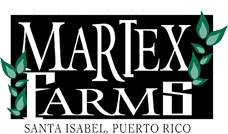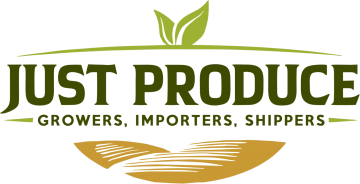Video — Packer editor-in-chief Tom Karst and Produce Retailer editor Ashley Nickle discuss the return of romaine.
Photo — Northeast editor Amy Sowder spotted romaine products back at an Ideal Fresh Market in Brooklyn, N.Y. on Dec. 6.
Some retailers have decreased romaine purchases in the wake of the recent E. coli outbreak, in part because volumes have been limited after a hard stop to romaine production Nov. 20.
The Food and Drug Administration approved romaine from most growing regions to return to commerce Nov. 26, and the leafy green has been slowing making its way back onto shelves since then.
“We are attempting to bring in the exact same item count that we carried prior to the advisory,” said Jeff Cady, director of produce and floral for Williamsville, N.Y.-based Tops Markets. “Our direction to the buyers is to purchase 75% of what they were purchasing. Currently we are buying everything we can as supply is very limited due to the fact that the country is refilling the supply chain.
“From what I have heard, the customers understand what happened and are making a personal choice,” Cady said Dec. 6. “Fortunately for the industry, we are seeing better sales than we thought we would see.”
Dave Corsi, vice president of produce and floral for Rochester, N.Y.-based Wegmans Food Markets, indicated the overall effect of the outbreak remains to be seen.
“Not much time has passed to understand customer confidence impact, but we have seen a spike in other varieties of lettuce like iceberg, butter or Boston, green leaf and baby leaf items,” Corsi said Dec. 6. “We can say impact after these events show a clear decrease in consumer purchases. The good news is it’s rare to see customers completely leave the category or segment all together.”
Caitlin Tierney, director of produce for Commerce, Calif.-based 99 Cents Only, said the company has been stocking less romaine but that the product is selling well.
“We are stocking about 70% of what we sold prior to the outbreak and (it) seems like the perfect amount, with sell-through north of 90% in-store,” Tierney said Dec. 6. “Crazy enough, our bagged salad category is (up) 10% this week.”
Chelsea Minor, corporate director of consumer and public affairs, explained how Raley’s has been sourcing product.
“There are two parts to this — one, we are only sourcing romaine lettuce that outlines the growing region and date harvested to ensure we are within the CDC guidelines,” Minor said Dec. 6. “The production itself is lagging and many of the growers are working to get the crop back up and in production.
“Two, we want to move with the customer demands as well — we know that the customers’ trust with romaine needs to be rebuilt,” Minor said. “Our efforts are around (being) a trusted source of information and bringing the customer along with the new transparency tool to look for the region and date harvested.”
Krista Torvik, spokeswoman for Boulder, Colo.-based Lucky’s Market, said the company is now stocking romaine at full capacity.
Across the country, restocking began the last couple days of November and the first couple days of December.
Carlisle, Pa.-based Giant Food Stores began restocking shelves with romaine Dec. 1. West Sacramento, Calif.-based Raley’s and 99 Cents Only had the leafy green again Nov. 30. Tops Markets saw romaine return in the same time frame, with Dec. 1 the first ship day to stores. Wegmans first began seeing romaine reappear Nov. 29. Boulder, Colo.-based Lucky’s Market also had romaine back around that time.
Communication key
Tops Markets, Giant Food Stores, 99 Cents Only, Wegmans Food Markets and Raley’s reported using in-store signage to communicate three main points: that the FDA has deemed a number of growing regions acceptable, that the retailer will only source romaine from those regions, and that consumers can confirm the source by checking labels on products.
Along with preparing information for shoppers, retailers have taken steps to keep their store-level employees informed as well.
“We have sent out communications via e-mail speaking to the situation and how we are handling it and how they should communicate as a result,” Cady said. “We leaned on the direction from the (Centers for Disease Control and Prevention and) FDA on the language to use.
“We are being 100% transparent with the associates and our customers,” Cady said. “The choice is the consumer’s on whether or not to buy romaine. We make sure they are well informed.”
Raley’s also took steps to equip employees to answer questions.
“We have had several team member communication announcements for our teams — both conference call notification and sharing through our produce leadership team,” Minor said. “All stores have received talking points, similar to the statement made (in stores and online). We want customers to be assured that we are tracking this issue and ensuring all products on the shelf meet the CDC guidelines.”
99 Cents Only also gave employees cards with five common questions about the outbreak and romaine so they would be prepared to talk with shoppers, Tierney said.
Lucky’s Market also provided information to its associates.
“When there is a food recall, we send out Q&A documents to our store directors — and for this specific recall (to our) produce managers — to arm them with answers to questions they may receive from customers,” Torvik said.
Giant Food Stores also delivered resources to store-level employees so they would have the information consumers might be seeking, said Ashley Flower, manager of external communications and community relations.
Wegmans did likewise, providing associates updates from the FDA and CDC.
“In addition, we found the Q&A from the joint produce associations helpful for our stores to reference,” Corsi said.














